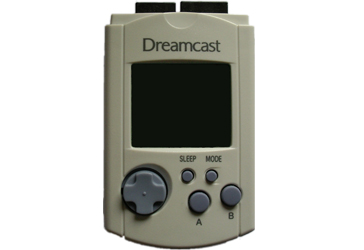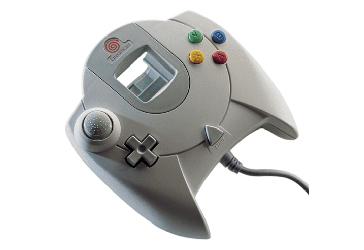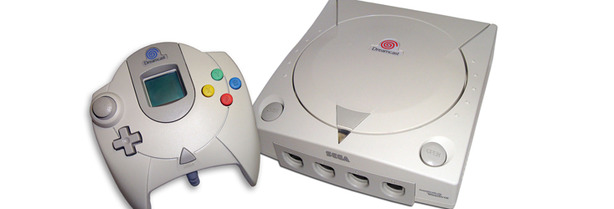
Deeper into the Dreamcast
At 100MHz, the Dreamcast’s graphics architecture used 10 million transistors on a 25 micron (25,000nm) process like the Saturn’s SH4, which could generate 7 million polygons per second, and could address up to 32MB of memory.However, Sega shipped the Dreamcast with just 8MB of video memory because the output resolution was limited to 640 x 480, leading to the Dreamcast being able to render more polygons per second than it could actually store. In comparison, the previous Saturn could only muster 200,000 polygons and a fraction of the shadow, fog and texture effects.
Sound had its own processor too: a Yamaha ARM7 ASIC 45MHz processor that supported 64 channels of DVD quality 48KHz, 16-bit sound. It even had its own memory - 2MB of 66MHz DRAM - so it wouldn’t bottleneck the interconnecting buses.
Here be Pirates
While the Dreamcast’s hardware specifications were impressive for the time, possibly the biggest downfall for Sega was piracy. While the PS1 had also suffered it on a grand scale and survived, the Dreamcast was a lot less lucky and soaring piracy was a serious issue for Sega.Despite having a unique GD-ROM that could squeeze 1.2GB onto a “dual layer” CD, most games were under 700MB – that was a CD recordable size, and so games were easily copied. A couple of years later, Sony somewhat combatted the piracy issue with its PS2, which used DVDs. It was a few more years still before recordable DVD-Rs were available on a large scale - to pirate on a PS2, it usually took a very steady soldering iron and a mod chip, rather than a simple disc swap.
The Controllers
The Dreamcast controllers were the poster boy of innovation for the company when the console first hit the market. Each gamepad had space for two plug-in memory cards that featured little dot matrix LCD screens to tell you what was on them and displaying simple graphics. Incredibly, the memory cards (VMUs) even had little games of their own on them, though they were rudimentary at best and only supported by some titles.Ultimately though, the VMUs were an unnecessarily expensive addition, especially since at least one was required to save games. Sega’s forward thinking idea that each pad would be differentiated by its LCD screen was quickly abandoned as most gamers would only buy one memory card.
The controller design was, on paper, ergonomically excellent, but in practice quite atrocious. Whoever thought a cable that comes out towards you before connecting to the console on the other side of the room was a good idea? Also, the controller naturally forces the wrists and elbows together uncomfortably, while the competing PlayStation controller let your hands and arms sit in a more natural position splaying outwards. The saving grace for the Dreamcast was that size-wise, Sega nailed it in our opinion, and the analogue stick is still one of the best you’ll ever use.
In the end, Sega managed to ship 10.6 million Dreamcasts. Not an insignificant number, but compared to the 130 million PS2s Sony eventually shipped from “the same generation” and 100 million original PlayStations in the previous gen, the Dreamcast was entirely eclipsed. Even the N64 shipped nearly 33 million, while the Saturn only managed 9.5 million units. This indicates that Sega gambled and lost big when it came to the Dreamcast.
Not everything is a hardware-based problem though, so next we take a look at some of the most popular and well-known games on the Dreamcast (plus a few unknowns). We found it was all-too-easy to let our memories of the games get skewed with nostalgia, so we decided the only way to properly talk about the games was after having set up a recently unearthed Dreamcast in the labs and play a few games. We have no idea where the beer and pizza came from.

MSI MPG Velox 100R Chassis Review
October 14 2021 | 15:04












Want to comment? Please log in.